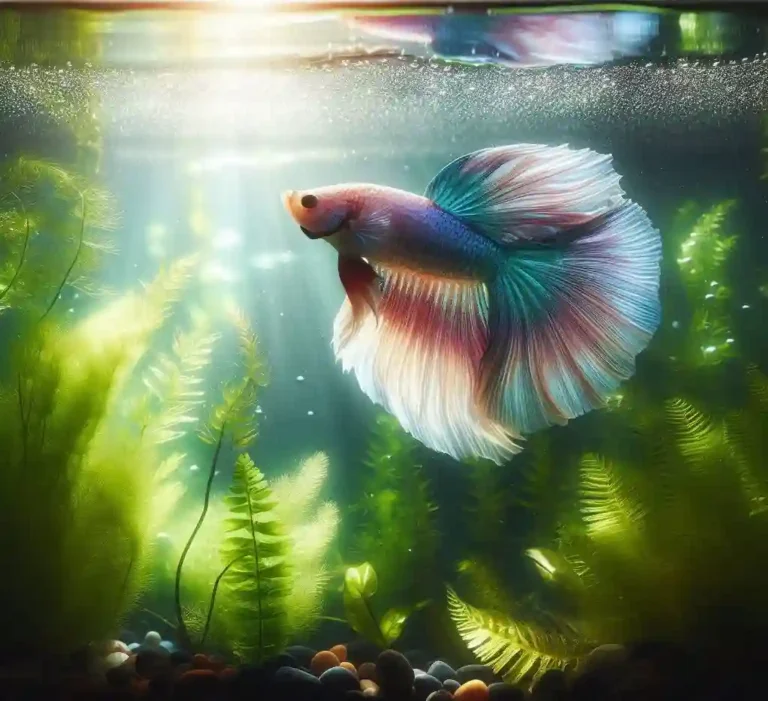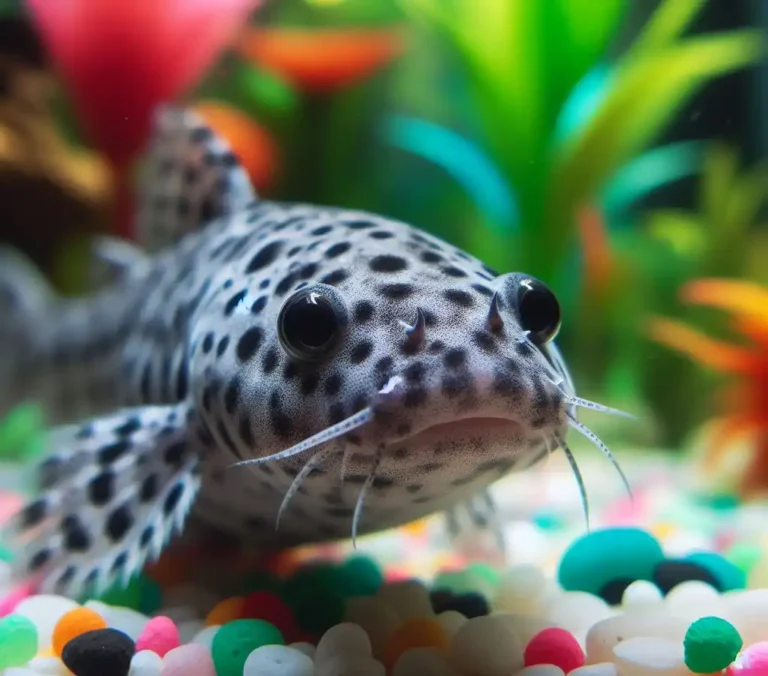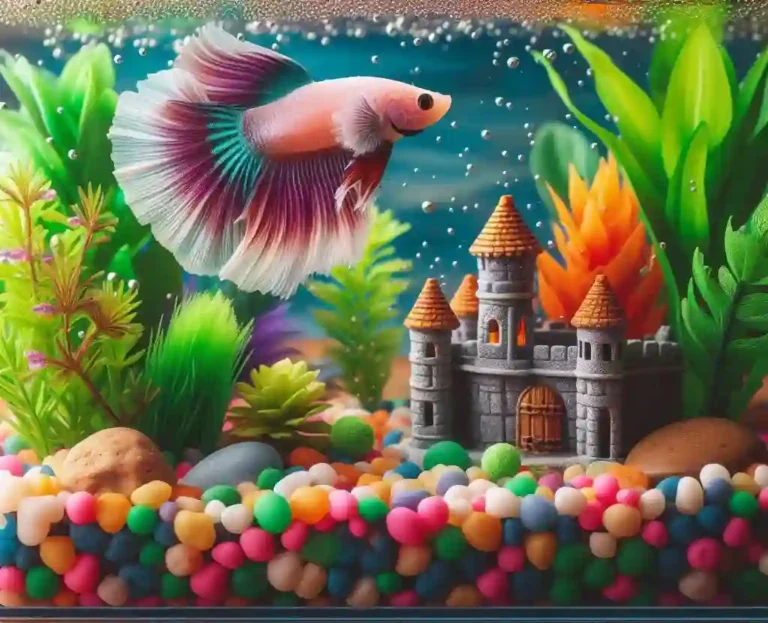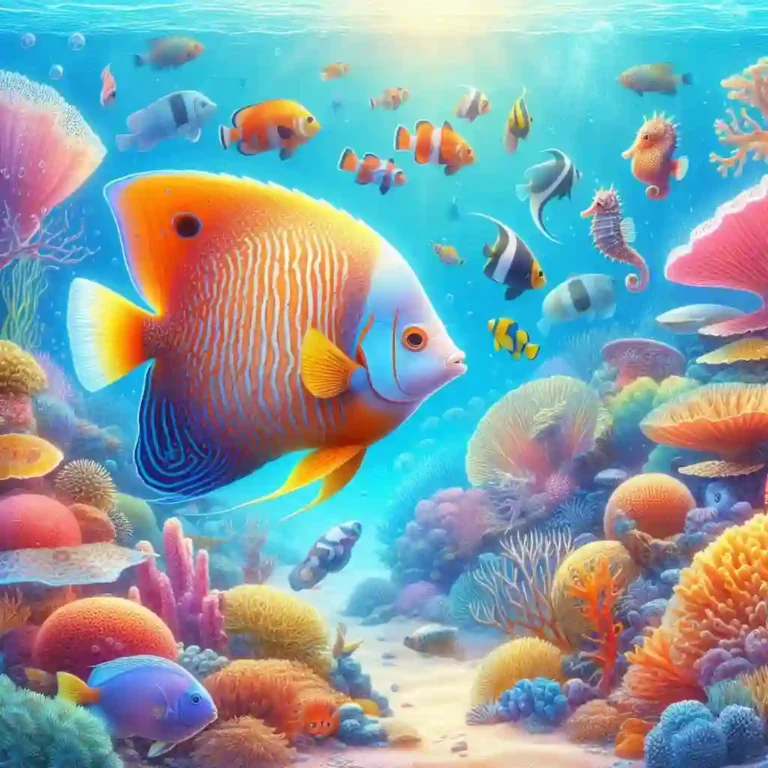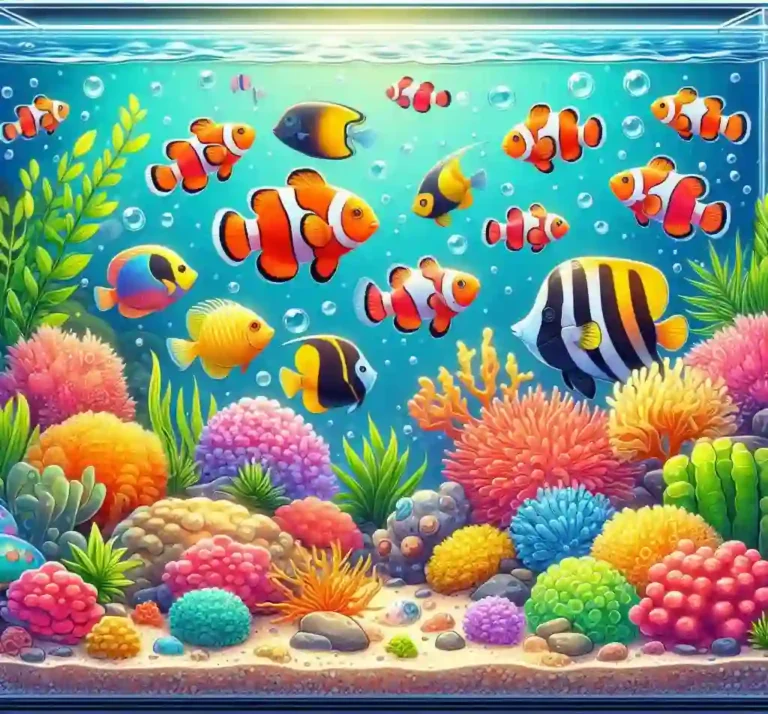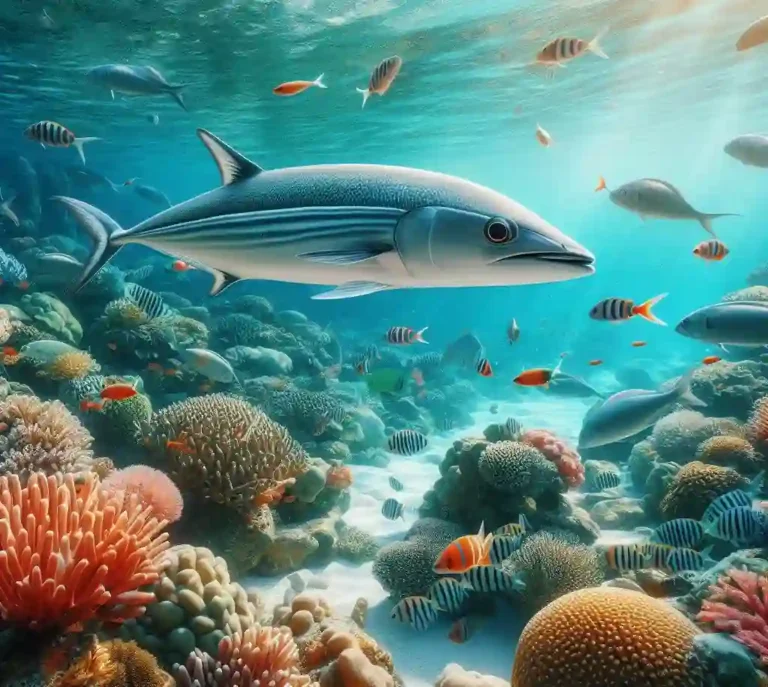Mudskipper Care: A Guide to Keep Fish Healthy
Mudskipper Care: Mudskippers are one of the most fascinating and unique fish species, with their ability to breathe air and navigate their surroundings with ease.
However, caring for these remarkable creatures requires a delicate balance of proper housing, diet, and maintenance.
In this comprehensive guide, we’ll delve into the essential aspects of mudskipper care, from creating a suitable aquarium environment to recognizing and preventing common health issues.
Mudskipper Care: A Quick Guide
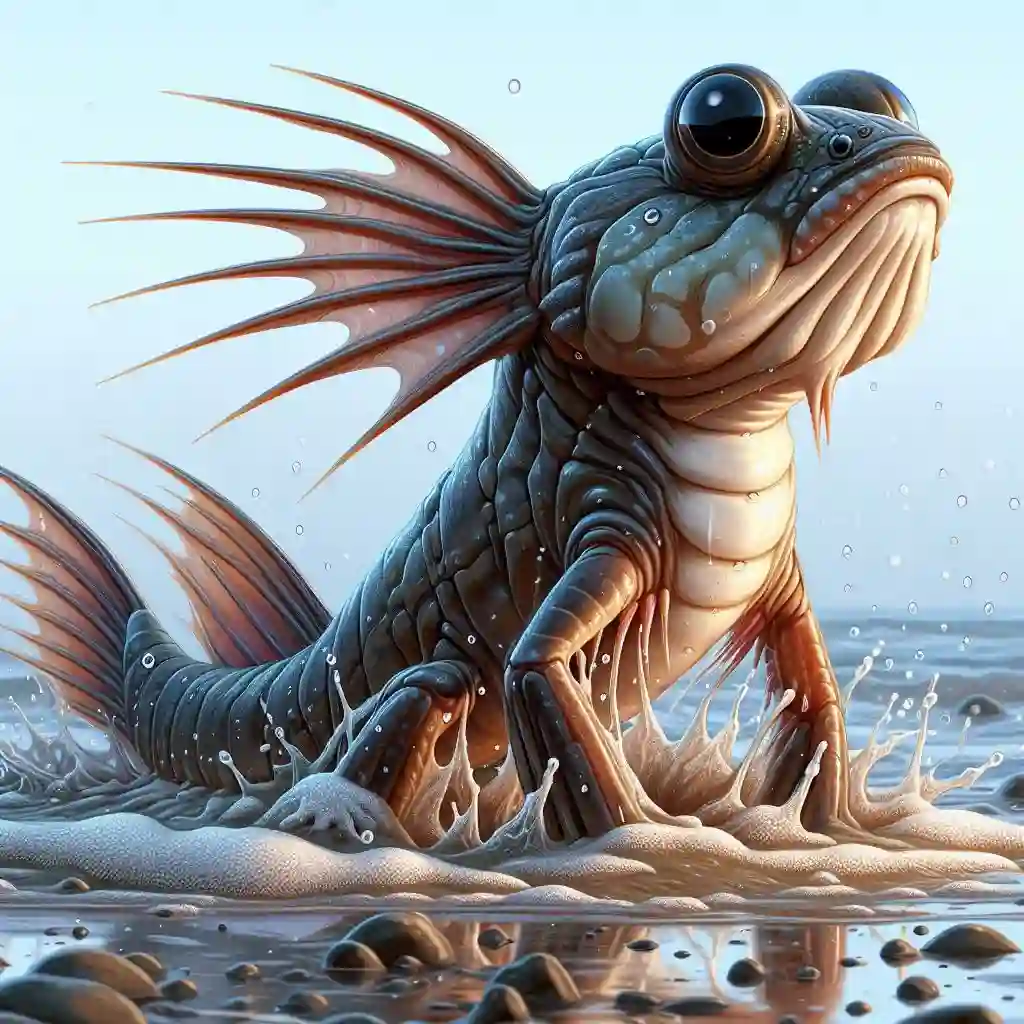
| Topic | Description | Tips |
|---|---|---|
| Housing | Provide a 20-gallon tank with a secure lid | Use a tank with a secure lid to prevent escape |
| Water | Maintain pH 7.5-8.5, temperature 72-82°F | Monitor water parameters regularly |
| Feeding | Feed 2-3 times a day, only as much as they can consume | Provide a varied diet including brine shrimp, mysis shrimp, and bloodworms |
| Water Changes | Change 10-20% of the water every week | Monitor water quality and make adjustments as needed |
| Handling | Handle gently and carefully | Use a soft-mesh net to catch and handle your mudskipper |
| Disease Prevention | Maintain optimal water quality, provide a varied diet, and avoid overcrowding | Monitor your mudskipper’s behavior and health regularly |
| Stress Reduction | Provide a peaceful environment, avoid overcrowding, and minimize handling | Monitor your mudskipper’s behavior and health regularly |
| Life Expectancy | 5-7 years in captivity | Provide a healthy and stable environment to promote longevity |
Housing and Environment: Creating a Suitable Aquarium for Your Mudskipper
When it comes to housing your mudskipper, it’s essential to provide a suitable environment that meets their unique needs. Here are some key considerations to keep in mind:
Aquarium Size and Shape
- Mudskippers require a spacious aquarium with a minimum capacity of 20 gallons. A longer, narrower tank is preferred over a tall, narrow one, as mudskippers are more active swimmers.
- A rectangular tank with a length of at least 24 inches and a width of at least 12 inches is recommended.
Substrate and Decorations
- Use a soft, sandy substrate that allows your mudskipper to dig and burrow. Avoid using gravel or rough substrates that can cause injury.
- Add decorations such as rocks, plants, and driftwood to create hiding places and visual interest. Mudskippers are naturally curious and enjoy exploring their surroundings.
Water Parameters
- Mudskippers thrive in water with a pH range of 7.5-8.5 and a temperature range of 72-82°F (22-28°C).
- Maintain good water circulation and a moderate water flow to prevent stagnation and promote healthy swimming.
Lighting
- Mudskippers are sensitive to intense lighting and prefer subdued lighting conditions. Use low-wattage LED or T5 lighting to create a natural day-night cycle.
Water Changes and Cycling
- Perform regular water changes (10-20% every week) to maintain optimal water quality and prevent the buildup of toxins.
- Allow your tank to cycle for at least 4-6 weeks before introducing your mudskipper to ensure a healthy and stable environment.
Water Quality and Maintenance: Tips for Maintaining Optimal Water Conditions
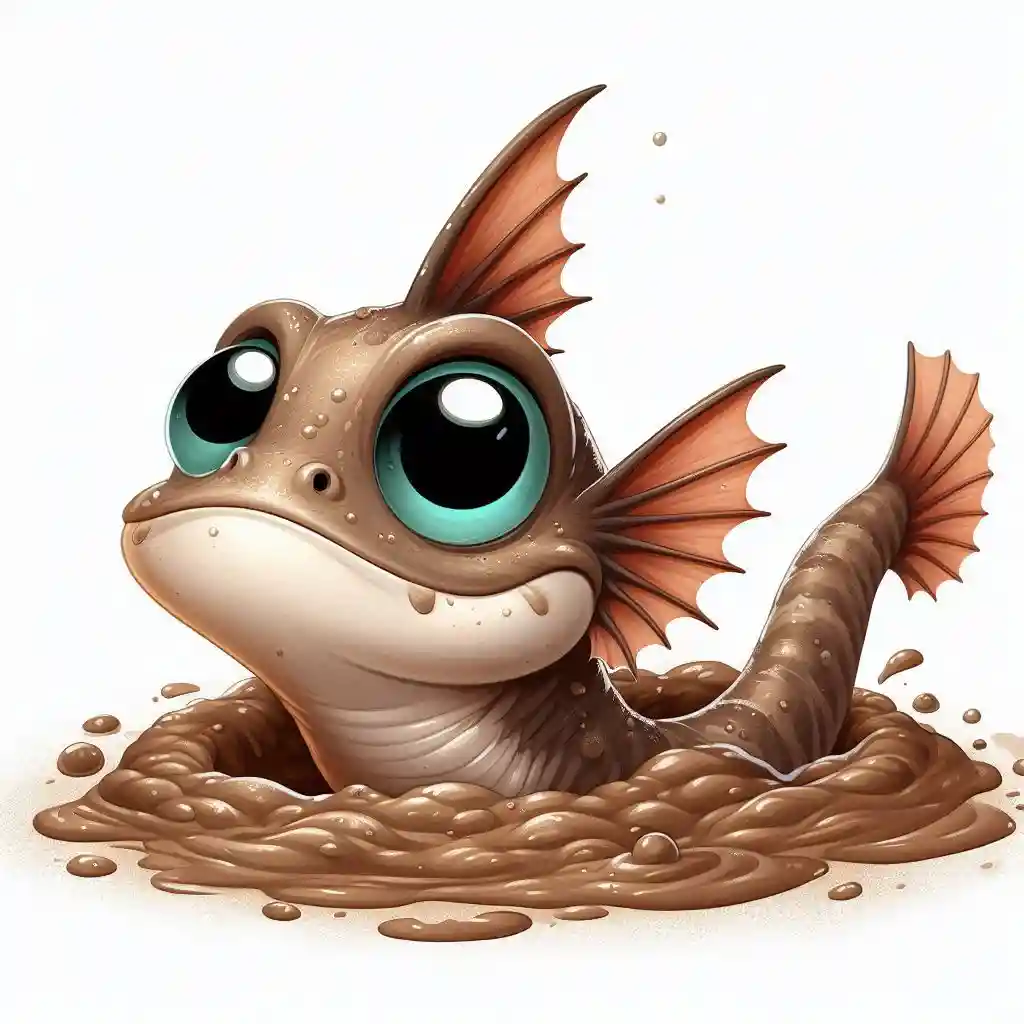
Here are some tips to help you achieve and maintain excellent water quality:
Regular Water Changes
- Perform regular water changes (10-20% every week) to remove waste products, excess food, and other contaminants that can harm your mudskipper.
- Change the water slowly to avoid shocking your fish and disrupt the natural balance of the tank.
Monitor Water Parameters
- Regularly test the water for pH, ammonia, nitrite, and nitrate levels to ensure they are within the optimal range for your mudskipper.
- Use a high-quality water test kit to get accurate readings and make adjustments as needed.
Maintain Good Water Circulation
- Ensure good water circulation by using a high-quality filter and adjusting the flow rate to create a gentle current.
- Avoid strong currents that can stress your mudskipper and disrupt the natural flow of the tank.
Avoid Overfeeding
- Overfeeding can lead to poor water quality and stress your mudskipper. Only feed your mudskipper as much as they can consume within a few minutes.
- Remove any uneaten food to prevent decay and maintain optimal water conditions.
Clean the Tank Regularly
- Clean the tank regularly to remove algae, debris, and other contaminants that can affect water quality.
- Use a gravel vacuum to remove debris and waste from the substrate.
Monitor Tank Conditions
- Regularly inspect the tank for signs of stress, disease, or water quality issues.
- Take prompt action to address any issues that arise to prevent harm to your mudskipper.
Diet and Nutrition: Feeding Your Mudskipper for Optimal Health
Feeding Frequency and Amount
- Feed your mudskipper 2-3 times a day, only as much as they can consume within a few minutes.
- Start with a small amount (about 1-2 pellets or 1-2 frozen foods) and gradually increase the amount as your mudskipper grows.
- Avoid overfeeding, as this can lead to poor water quality and stress your mudskipper.
Dietary Requirements
- Mudskippers are carnivores and require a diet rich in protein.
- Feed your mudskipper a variety of foods, including:
- High-quality commercial pellets or flakes specifically formulated for carnivorous fish.
- Frozen or live foods such as brine shrimp, mysis shrimp, or bloodworms.
- Fresh or frozen vegetables like zucchini, carrots, or peas (optional).
Avoid Overfeeding
- Avoid overfeeding, as this can lead to poor water quality and stress your mudskipper.
- Monitor your mudskipper’s appetite and adjust the amount of food accordingly.
Variety is Key
- Rotate your mudskipper’s diet to ensure they receive a balanced and varied diet.
- Avoid feeding the same food every day to prevent boredom and ensure optimal nutrition.
Supplements
- Consider adding supplements like vitamin C or omega-3 fatty acids to your mudskipper’s diet to support their overall health and well-being.
Monitoring Your Mudskipper’s Appetite
- Monitor your mudskipper’s appetite and adjust the amount of food accordingly.
- If your mudskipper is not eating, consult with a veterinarian or experienced aquarist for guidance.
Tankmates and Socialization: Choosing Compatible Tankmates for Your Mudskipper
Here are some guidelines to help you choose the right tankmates for your mudskipper:
Avoid Aggressive Species
- Avoid keeping aggressive species like cichlids, angelfish, or tiger barbs with your mudskipper, as they may harass or attack your fish.
- Instead, choose peaceful species that are similar in size and temperament to your mudskipper.
Choose Similar-Sized Tankmates
- Choose tankmates that are similar in size to your mudskipper to prevent bullying or harassment.
- Avoid keeping small fish with large fish, as the smaller fish may be seen as prey.
Consider Socialization Needs
- Mudskippers are social animals and thrive in the company of other fish. Consider keeping a small school of peaceful fish, such as neon tetras or harlequin rasboras, to provide your mudskipper with social interaction.
- Avoid keeping solitary fish, like angelfish or discus, with your mudskipper, as they may not provide the social interaction your mudskipper needs.
Monitor Tank Dynamics
- Monitor your tank’s dynamics and adjust your tankmates as needed to ensure a harmonious environment.
- Be prepared to separate or remove tankmates if they’re not compatible or if your mudskipper shows signs of stress or aggression.
Some Compatible Tankmates
- Neon tetras
- Harlequin rasboras
- Zebra danios
- Corydoras catfish
- Small peaceful cichlids (e.g., Apistogramma or Mikrogeophagus)
Health and Disease Prevention: Identifying and Treating Common Mudskipper Health Issues
Common Mudskipper Health Issues
- Fin Rot: A bacterial infection that causes the fins to become damaged and rot.
- Fungal Infections: Fungal infections can cause white spots or patches on the skin and fins.
- Bacterial Infections: Bacterial infections can cause cloudy eyes, labored breathing, and lethargy.
- Parasites: External parasites like ich or velvet can cause skin lesions and irritation.
- Nutritional Deficiencies: Deficiencies in essential nutrients like vitamin C or omega-3 fatty acids can lead to a range of health issues.
Identifying Health Issues
- Monitor your mudskipper’s behavior, appetite, and physical condition regularly.
- Look for signs of illness, such as labored breathing, lethargy, or changes in skin color or texture.
- Regularly inspect your mudskipper’s fins, eyes, and body for signs of disease or injury.
Treating Health Issues
- Fin Rot: Treat with antibiotics and improve water quality by increasing water changes and reducing stress.
- Fungal Infections: Treat with antifungal medications and improve water quality by increasing water changes and reducing stress.
- Bacterial Infections: Treat with antibiotics and improve water quality by increasing water changes and reducing stress.
- Parasites: Treat with antiparasitic medications and improve water quality by increasing water changes and reducing stress.
- Nutritional Deficiencies: Treat with dietary supplements and improve water quality by increasing water changes and reducing stress.
Preventing Health Issues
- Maintain optimal water quality by performing regular water changes and monitoring water parameters.
- Provide a balanced and varied diet to ensure your mudskipper receives essential nutrients.
- Reduce stress by providing a peaceful and stable environment.
- Monitor your mudskipper’s health regularly and take prompt action if you notice any signs of illness.
Water Changes and Cycling: Understanding the Importance of Regular Water Changes
Why Regular Water Changes are Important
- Removes Waste Products: Regular water changes help remove waste products and toxins that can accumulate in the aquarium, which can harm your fish.
- Maintains Water Quality: Regular water changes help maintain optimal water quality by removing excess nutrients and waste products that can cause water quality issues.
- Prevents Disease: Regular water changes can help prevent disease by removing bacteria and other pathogens that can cause illness in your fish.
- Maintains pH and Water Parameters: Regular water changes can help maintain optimal pH and water parameters, which is essential for the health and well-being of your fish.
How to Perform Regular Water Changes
- Schedule Regular Water Changes: Schedule regular water changes to ensure that your aquarium remains healthy and thriving.
- Change 10-20% of the Water: Change 10-20% of the water in your aquarium every week to 10 days.
- Monitor Water Parameters: Monitor your aquarium’s water parameters, such as pH, ammonia, and nitrite levels, to ensure that they are within optimal ranges.
- Use a Water Test Kit: Use a water test kit to monitor your aquarium’s water parameters and ensure that they are within optimal ranges.
Tips for Performing Regular Water Changes
- Use a Siphon: Use a siphon to remove debris and waste products from the substrate and decorations.
- Avoid Siphoning the Substrate: Avoid siphoning the substrate, as this can cause damage to the beneficial bacteria that live in the substrate.
- Monitor Your Fish: Monitor your fish during and after water changes to ensure that they are not stressed or affected by the change.
- Perform Water Changes Gradually: Perform water changes gradually to avoid shocking your fish.
Aquarium Maintenance and Cleaning: Tips for Keeping Your Aquarium Clean and Healthy
Daily Maintenance
- Clean the Glass: Clean the glass walls of your aquarium daily to prevent algae buildup and maintain visibility.
- Vacuum the Substrate: Vacuum the substrate daily to remove debris and waste products.
- Check Water Parameters: Check water parameters daily to ensure they are within optimal ranges.
Weekly Maintenance
- Change 10-20% of the Water: Change 10-20% of the water weekly to maintain optimal water quality.
- Clean the Filter: Clean the filter weekly to ensure optimal water circulation and filtration.
- Check for Algae: Check for algae growth and remove it promptly to prevent it from spreading.
Monthly Maintenance
- Clean the Gravel: Clean the gravel monthly to remove debris and waste products.
- Check the Heater: Check the heater monthly to ensure it is functioning properly.
- Check the Pump: Check the pump monthly to ensure it is functioning properly.
Minimizing Stress and Handling Your Mudskipper Safely
Minimizing Stress
- Avoid Handling: Avoid handling your mudskipper excessively, as this can cause stress and anxiety.
- Provide a Stable Environment: Provide a stable and peaceful environment for your mudskipper to reduce stress.
- Monitor Water Parameters: Monitor water parameters regularly to ensure they are within optimal ranges for your mudskipper.
- Avoid Overfeeding: Avoid overfeeding your mudskipper, as this can cause water quality issues and stress.
Handling Your Mudskipper Safely
- Use a Net: Use a soft-mesh net to catch your mudskipper gently and safely.
- Support the Body: Support the body of your mudskipper when handling it to prevent injury.
- Avoid Squeezing: Avoid squeezing your mudskipper, as this can cause injury and stress.
- Handle Gently: Handle your mudskipper gently and carefully to avoid causing injury or stress.
Common Mistakes to Avoid When Caring for Your Mudskipper
- Overfeeding: Avoid overfeeding your mudskipper, as this can lead to water quality issues and stress.
- Poor Water Quality: Avoid neglecting water quality, as this can lead to disease and stress.
- Inadequate Heating: Avoid inadequate heating, as this can cause stress and discomfort for your mudskipper.
- Inadequate Filtration: Avoid inadequate filtration, as this can lead to poor water quality and stress.
- Handling Too Much: Avoid handling your mudskipper excessively, as this can cause stress and anxiety.
- Not Monitoring Water Parameters: Avoid neglecting to monitor water parameters, as this can lead to poor water quality and stress.
Additional Tips
- Monitor Your Mudskipper’s Behavior: Monitor your mudskipper’s behavior regularly to ensure it’s not showing signs of stress or anxiety.
- Provide a Stable Environment: Provide a stable and peaceful environment for your mudskipper to reduce stress and anxiety.
- Avoid Overcrowding: Avoid overcrowding your aquarium, as this can lead to stress and disease.
FAQs
Q: How often should I feed my mudskipper?
A: Mudskippers are carnivores and need to be fed a varied diet. Feed your mudskipper 2-3 times a day, only as much as they can consume within a few minutes.
Q: What kind of food should I feed my mudskipper?
A: Mudskippers are carnivores and need a diet rich in protein. Feed your mudskipper a variety of foods such as brine shrimp, mysis shrimp, and bloodworms.
Q: How often should I change the water in my mudskipper’s tank?
A: Change 10-20% of the water in your mudskipper’s tank every week to maintain optimal water quality.
Q: How do I prevent disease in my mudskipper?
A: Prevent disease in your mudskipper by maintaining optimal water quality, providing a varied diet, and avoiding overcrowding.
Q: How do I handle my mudskipper safely?
A: Handle your mudskipper gently and carefully to avoid causing injury or stress. Use a soft-mesh net to catch your mudskipper and support its body when handling it.
Q: How do I know if my mudskipper is stressed?
A: Signs of stress in mudskippers include rapid breathing, erratic swimming, and hiding. If you notice any of these signs, check your tank’s water quality and make adjustments as needed.
Q: How long do mudskippers live?
A: Mudskippers can live up to 5-7 years in captivity with proper care and maintenance.
Q: Can I keep multiple mudskippers together?
A: It’s generally recommended to keep only one mudskipper per tank, as they can be territorial and may fight with each other. However, if you do want to keep multiple mudskippers together, make sure to provide a large enough tank with plenty of hiding places and decorations.
Q: How do I know if my mudskipper is sick?
A: Signs of illness in mudskippers include labored breathing, lethargy, and changes in color or texture. If you notice any of these signs, consult with a veterinarian or experienced aquarist for guidance.

Hello, I’m Aria Cooper, the heart and soul behind Swimmy Buddies. As a devoted fish aficionado, I share my aquatic adventures and expertise to inspire your own underwater explorations. 🐠🌊


